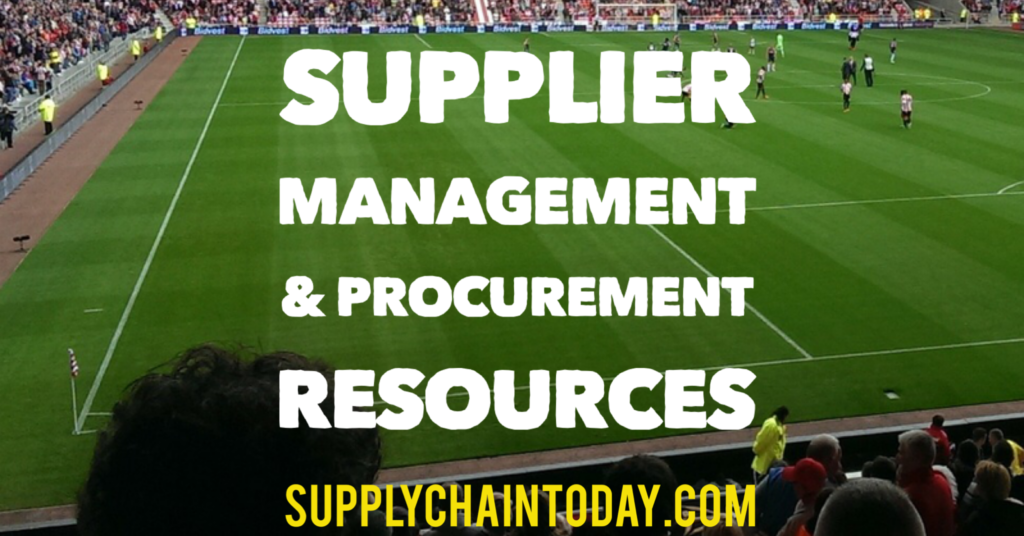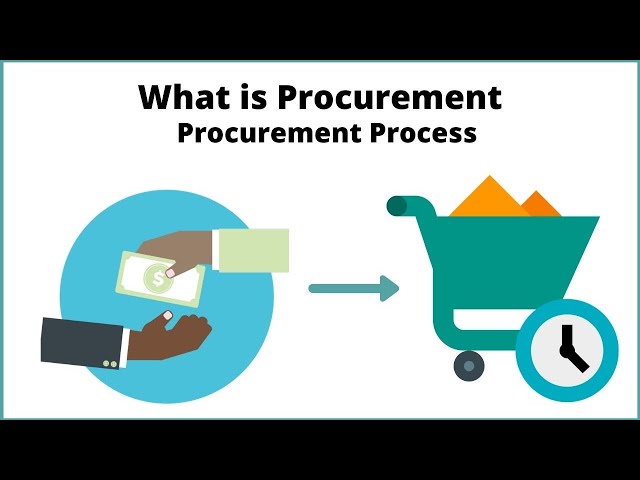What is Supplier Management and Procurement?
Procurement is the process of purchasing goods and services from suppliers and is a critical part of supply chain management. There are several key aspects of procurement that are involved in supply chain management, including:
- Supplier selection: Supplier selection involves identifying and evaluating potential suppliers in order to choose the most suitable ones for a company’s needs. This may involve considering factors such as cost, quality, delivery schedules, and the supplier’s reputation.
- Negotiation: Negotiation involves the process of establishing the terms and conditions of a procurement agreement, including the price, delivery schedules, and payment terms. This may involve negotiating with suppliers to secure the best possible terms for the company.
- Order placement: Order placement involves issuing a purchase order to a supplier and specifying the goods or services that are being purchased. This may include providing detailed specifications and delivery schedules.
- Receiving and inspection: Receiving and inspection involves receiving the goods or services that have been purchased and verifying that they meet the company’s quality and quantity requirements. This may include conducting inspections to ensure that the goods or services meet the specified standards.
- Payment: Payment involves settling the financial obligations associated with a procurement agreement, including paying the supplier for the goods or services that have been received.
Overall, procurement is a critical aspect of supply chain management that involves coordinating and managing the purchasing of goods and services from suppliers.
Advantages and Disadvantage
Advantages of procurement and supplier management:
- Cost savings: Effective procurement and supplier management can help a company secure better prices for goods and services, as it can negotiate with suppliers to get the best deals.
- Quality assurance: Procurement and supplier management can help ensure that a company gets high-quality goods and services by setting strict performance standards and evaluating suppliers based on their ability to meet those standards.
- Risk management: Procurement and supplier management can help a company manage risks associated with its supply chain, such as the risk of supplier failure or delivery delays.
- Improved efficiency: Procurement and supplier management can streamline the process of acquiring goods and services, making it more efficient and cost-effective.
- Stronger relationships: Effective procurement and supplier management can lead to stronger relationships with suppliers, which can be beneficial in the long run.
Disadvantages of procurement and supplier management:
- Complexity: Procurement and supplier management can be complex processes, especially for companies that work with a large number of suppliers.
- Time-consuming: Procurement and supplier management can be time-consuming, as it involves researching and evaluating potential suppliers, negotiating contracts, and managing relationships with suppliers.
- Limited flexibility: Procurement and supplier management can limit a company’s flexibility, as it requires a company to commit to a specific supplier for a certain period of time.
- Dependency: A company may become reliant on a single supplier, which can create risks if the supplier experiences problems or goes out of business.
- Resource constraints: Procurement and supplier management can be resource-intensive, requiring a dedicated team and budget to manage effectively.
Cost Savings: Procurement and Supplier Management
Cost savings with procurement and supplier management can be achieved in a number of ways:
- Competitive bidding: Procurement and supplier management can involve soliciting bids from multiple suppliers, which can help a company secure the best prices for goods and services.
- Volume discounts: Procurement and supplier management can help a company negotiate volume discounts with its suppliers, which can lead to lower prices for goods and services.
- Consolidation of suppliers: Procurement and supplier management can involve consolidating the number of suppliers a company works with, which can help a company negotiate better prices and terms.
- Supply chain optimization: Procurement and supplier management can involve optimizing the company’s supply chain to reduce costs, such as by reducing lead times or minimizing inventory levels.
- Improved contract management: Effective procurement and supplier management can involve managing contracts more effectively, such as by negotiating better terms or ensuring that suppliers are meeting their obligations. This can lead to cost savings for the company.
Evaluate Supplier Performance.
In order to get the most out of suppliers it is important to decrease the supplier base and work closely with existing suppliers. Use the following information to evaluate supplier performance.
PRIMARY MEASURES
|
|
Questions for Supplier Development/Management
- Works closely to lower overall costs
- Provides market/product knowledge/information along with service and support
- Supplier identifies opportunities to decrease costs and suggests ideas on ways to improve the supply chain.
- Performs joint cost-reduction/quality improvement programs
- Supplier can deliver products across various geographic regions
- Shares data and supplies resources to locate and solve problems.
- Deliveries meet deadlines and do not need to be expedited to meet delivery time.
- Supplier readily shares cost information.
- Recognizes potential opportunities to incorporate new ideas.
- Supplier is involved with product in early stages of design
- Supplier implements procedures for controlling fluctuations in raw material costs
- Provides technical support for production/quality problems
- Supplier gives ideas and suggestions during initial stages of product development
- Proactive in offering innovative and alternative technologies
- Supplier is proactive in finding problems and discovering solutions
- Supplier gives feedback on quotations to reduce costs
- High interest in joint problem solving.
- Reacts quickly and effectively to problems and proactive to finding solutions
- Supplier is flexible and adjust to special requests when needed
- Responds quickly and effectively under adverse situations.
- Supplier keeps the lines of communication open and lets customers know when problems may occur
- Expedites emergency orders in a timely manner
- Suppliers do what they say and are trustworthy
- Proactive in communicating forecasts for planning and deliveries
- Suppliers’ technology roadmap aligns with the company’s current IT initiatives
- Capable to exchange information through the Internet
- Proactive in providing value added proposals
- Supplier provides innovative suggestions for improvements and anticipates future problems
- Participates in joint development efforts
- Provides technological assistance and engineering support
- Supplier is willing to provide rapid modeling and prototype capabilities
- What is the financial feasibility of the company
- What is the vendor’s reputation in the industry
- Is the quality worth the price
- Is the product over engineered
- Does the supplier have a quality system in place
- Is there a quality improvement plan in place
- Does the vendor meet delivery and cycle time goals
- Does the supplier try to reduce lead times
- Are there processes for controlling and leveraging raw material cost
Supplier Management and Development Training.
- 7 Tips for Successful Supplier Relationship Management.
- Procurement supplier selection process (10 minute video).
- Strategic Sourcing and Better Contract Negotiations.
- Strategic Sourcing for Successful Supply Chain Management.
- Supplier Selection and Certification
What is Procurement? | Procurement Process.
Tips to Negotiate Lower Real Estate Commission.
NAR Settlement Real Estate Changes.



